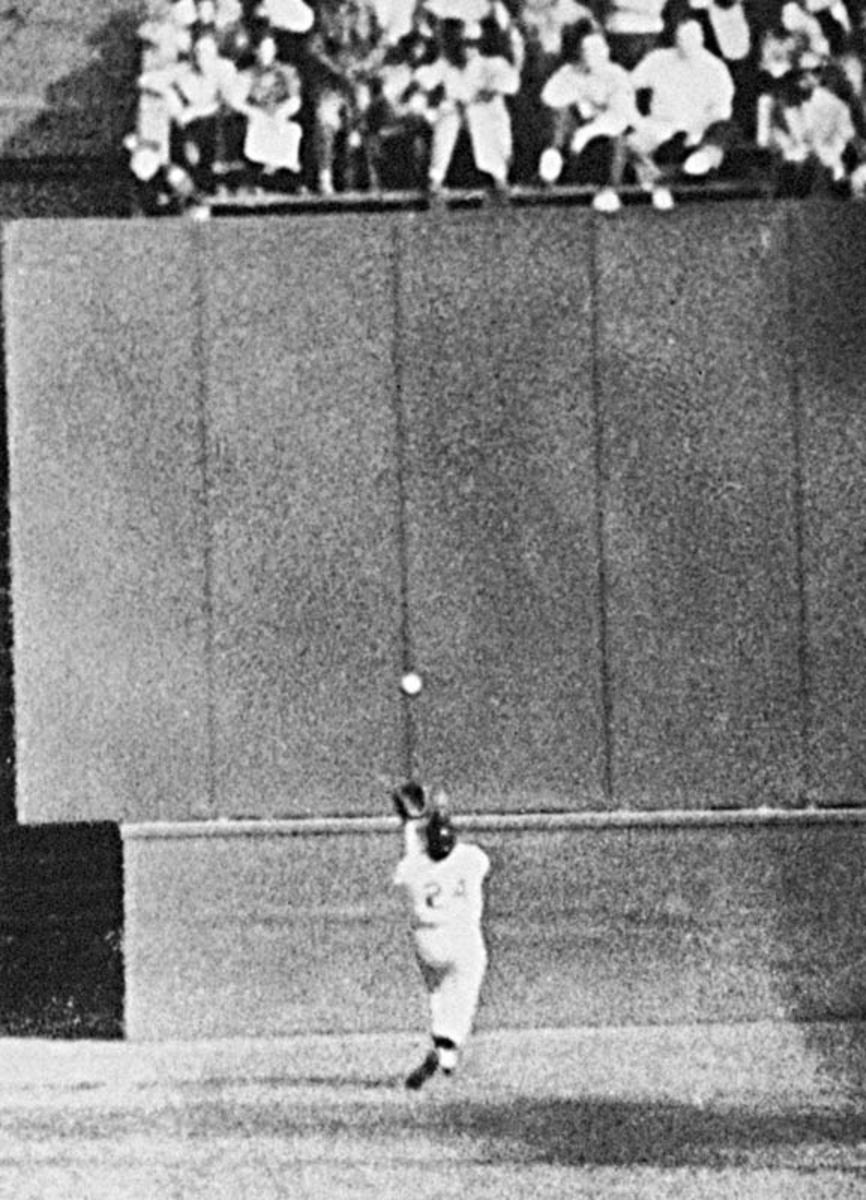I Can Save Baseball if Bud Will Listen

April 16, 2010
Welcome to the Fat Man’s (Almost) Daily Baseball Ramblings
This has to be the strangest time ever faced by the Grand Old Game. It truly is at the proverbial “crossroads.” In many ways, the game is stronger than ever. Attendance and revenues are at or near record levels. On average more than 19 million viewers tuned into each World Series game last October. Over the last six years, the league has successfully launched dedicated radio (SiriusXM) and television (MLB Network) networks. Fantasy baseball and internet streaming of both audio and video from every game have also helped to increase interest. At the same time, there are some potentially life-threatening issues hiding around the corner. Youth involvement in the game is down in America. There is greater disparity than ever between the haves and the have-nots. Finally, the overall quality of play (pitching in particular) has diminished greatly over the past 20 years. The time to seriously consider contraction and to define the exact uses of revenue sharing dollars is official here.
“Nice rug, buddy!”
Baseball is a lot like its Commissioner. At the nuts and bolts level, it gives the viewer what they want. They can tune in on any given night and see an entertaining version of its product on display. The problem is that the game is hiding its baldness under the toupee of revenue. Unlike Bud’s, this toupee is gorgeous. It’s Larry Hagman from Dallas‘esque. The amount of revenue currently being generated is astronomical. Even in the face of a horrible economic recession, more than 73.4 million fans chose to throw down an average of $26.74 for entry into the game’s cathedrals. Another 41.6 million tickets were sold at the various minor league levels. Between ticket sales, the freshly launched MLB Network, merchandise, etc., the league boasted its greatest revenue total ever in 2009 ($6.6 billion - only trailing King Football by 1 b). It’s easy to understand why Commissioner Selig would point to these numbers when asked about the health of the game. MLB.TV (the mlb.com service that streams both audio and video of every MLB game live) has also proven to be a cash cow. With the explosion of fantasy sports, more people are hungry to follow every pitch of every game than ever before.
Too Little Little Leaguers
Still, there are issues festering below the surface that, if unaddressed, could spell potential disaster for the league in 10-15 years. At the forefront is the declining percentage of youths who are participating in baseball/softball at all, but especially into their teen years. Little League has seen its enrollment drop by 16% over the past twelve years. These are world-wide numbers and include the massive growth of the game/league in both Asia/Oceania and Latin America. This would point to massive losses in the heartland. Much has been made of the lack of young African-Americans choosing baseball, but little focus has been given to the fact that less boys of ALL RACES are choosing to pursue the game and, instead, are turning to basketball, football, lacrosse, etc. This may prove to be a serious issue several years from now when today’s fifteen year-olds are the heads of 4 person households trying to decide between taking in a movie or takin’ ‘em out to the ballgame. At any given MLB game, a clear majority of the fans in attendance played the game at some point. The bond with, love of, and appreciation for the game is most often formed standing in the infield dirt or outfield bare spot of the neighborhood Little League field. People who have never taken batting practice tend to be less interested in or appreciative of the difficulty of hitting a round ball with a round bat. Many MLB clubs are sending huge chunks of cash south to scout and develop talent in Latin America. The league would be better served to spend some of that money domestically and insure the stability of the game for years to come.
Haves, Have-Nots, and Won’ts
Why do people choose to own professional sports franchises? Obviously it is for the same reason people choose to make any sort of investment - profit. Sure, occasionally you will find a Mark Cuban-type fan/owner (the Maloofs in Sacramento come to mind). Most times, though, the goal of the owner is to see a return on her investment. There are several ways to reach this goal. The hardest way is the Steinbrenner method: start from a place of immense personal wealth; secure a team in a big market; pump a ton of said personal wealth into the management, scouting department, and player payroll; then put a quality product on the field that people will pay money to watch both in person and on TV. There are really only five markets where this is even possible to do: New York, Boston, Philadelphia, Chicago, and Los Angeles. Any team outside of those cities will have to follow a different schematic.
The fact that a team is not in a major market does not mean that it is doomed to mediocrity. In fact, almost half of the teams to reach the World Series in the last ten years have come from mid-level markets. The keys to running these teams successfully are to have an extremely strong scouting department, talented coaches at the developmental level, and the foresight to maximize the potential gains as the developed talent reaches either its physical peak or the limits at which the team can afford to keep them. The teams capable of handling this juggling act will consistently have a quality product for their fans to support and, thus, end up turning a decent profit year after year. Occasionally, all of the necessary factors will align and they can even make a run at a World Championship. Models of this approach would be the St. Louis Cardinals, Atlanta Braves, Minnesota Twins, and the Florida Marlins.
The problem, the perceived disparity, between the “haves” and the “have-nots” is not found by comparing these two groups. The problem lies with the “wont‘s.” These are the owners that simply will not invest enough money in their ball club to make them competitive. They take their piece of the revenue sharing pie being generated by the MLB network, the other television contracts, and the proceeds coming from the more successful teams and simply line their pockets. These teams come in three flavors.
The first are the “Developers.” These teams claim to put a premium on scouting and development. They show little to no interest in acquiring free agents, instead opting to let players who are not major league ready fill their openings. Occasionally they are successful at developing some outstanding talent, but often just rush over-hyped players to the majors prematurely effectually snuffing whatever potential they actually did have. The Oakland Athletics come to mind here (the confusing Ben Sheets signing aside).
The “Snyders” are the next group (named after famed over-reaching owner of the Redskins). These teams make no effort to develop their own talent or are simply horrible at doing so. Instead, they reach for one or two middle to high level free agents in an effort to spark fan interest. The problem here is that these owners typically are unwilling or unable to spend enough money to surround their one or two stars with any other talent. Their minor league rosters are perpetually devoid of talent as well. This means another inferior product on the field. The Tampa Bay Devil Rays were the poster boys for this early in their existence, but have since decided to follow the Marlins blue-print. Today, the Houston Astros and Washington Nationals jump out (in fairness, the Nationals had a huge draft in 2009).
The final group are the “Dead Beats.” These are the teams that are just horribly managed. These owners seem to say, “Hey, I can finish in last place with a 70 million dollar payroll or a 40 million dollar payroll. I think I’ll keep the change.” It’s like they look at the team as a tax write-off. Little is truly done in the way of scouting and development. Less is done to bring in true talent off of the waiver-wire. They are the doormats and their product is sometimes worse than a good AAA team. One needs to look no further than the Kansas City Royals and the Pittsburgh Pirates. These franchises have been an embarrassment for the better part of fifteen years with no end in sight.
So where does that leave baseball? What are the consequences of this system? It all adds up to an inferior product being put on display. The league has become completely watered down. The quality of play is down at every position, but no where is it more evident than with the relief pitching. One needs to look no further than the opening night game this season between the Boston Red Sox and the New York Yankees. These two teams combine for a payroll of over $368 million dollars, and yet even they can’t develop a decent bullpen. Sure, they both have gifted closers, but not enough surrounding talent to even get to them. It has gotten to the point where not only are the bullpens completely devoid of quality, but teams are struggling to find competent starters for their fifth man spots. Do people really want to pay money to see a battle between Craig Stammen and Aaron Cook? Really? Infields are littered with not-ready-for-prime-time players. How many unseasoned, ill-prepared receivers have been rushed to the majors over the past five years? Enough that guys like 39 year old Gregg Zaun (Happy Birthday by the way) sill have jobs. The Brewers continue to stick with Zaun and his .148 BA because he is actually capable of managing a game behind the plate. That skill has become a true rarity these days.
“What is the point, Pee Wee?”
Baseball (like myself currently) is suffering from some stress fractures. The pains may only be slight at this point, but if left unaddressed, a clean break will undoubtedly occur. So what can be done? What is the baseball version of the cam walker? The solution is three-fold. First, the league needs to contract by no less than 4 teams. Next, the AL and NL need to be realigned by market size Finally, monies acquired through revenue sharing need to be given clearly defined purposes.
The league needs to contract by no less than four teams. In theory, this would put 20 more starters, 8 more quality relief arms, and at least 2 quality players per position back in the MLB player pool. This would go a long way towards improving the overall quality of the game by simply improving the talent on the field. This should also work to quicken the game. The old adage is that good pitching beats good hitting. If the level of both the hitting and pitching improves equally, one would assume the advantage would go to the guys on the mound. Managers may not be forced to pitch to the match-up so often late in the game as their relievers would be of higher quality. This, combined with a no-exit rule once a hitter steps into the box, could go a long way towards getting the game times closer to 2.5 rather than three hours.
(Aside: The concern over the length of the games is bit ridiculous. I personally have never heard someone say, “I’m not going to that baseball game because it is just too long.” Most casual fans go to the game for the experience alone. When they have seen enough, they leave. College football games run between 3 and 3.5 hours. No one but ESPN complains.)
The four teams that should be disbanded are the Kansas City Royals, Pittsburgh Pirates, San Diego Padres, and Washington Nationals. These four teams refuse to compete for one reason or another. KC, PIT, and WAS seem to be incapable of taking the steps necessary to improve their ball clubs from the ground roots up. OAK and SD currently will only spend enough money to get their talent AAA ready. In the rare case that they do develop someone with true MLB talent, they look to immediately off-load them. All five organizations have proven to be a drain on the league, unable to break through and truly compete over the last decade. That said, Oakland has been strong enough over that time to be considered the fifth team in these talks. The Padres had two nice season in ‘05 and ‘06 but have finished in last or next to last every year since. SD, KC, WAS, and PIT have managed to finish last 20 times and next to last another 12 during that time. It’s time to trim the fat. Pay the owners what Forbes says their franchises are worth and put their players (/w contracts) out there as free agents.
The Realignment
Now down to 26 teams, the National and American Leagues should be realigned by market size. Large market teams should go in the American League where they can more easily absorb the cost of the designated hitter. Purists will scream bloody murder over this, but it is not unprecedented for teams to switch leagues. Not only would such a change even out the playing field for all involved, it would undoubtedly provide some compelling matchups as cross-town rivals go from playing a home-and-home to becoming full-out division arch-enemies. I would propose the following divisions:
American League East: New York Yankees, New York Mets, Boston Red Sox, Philadelphia Phillies, Atlanta Braves, Chicago White Sox, Chicago Cubs
American League West: Los Angeles Dodgers, Los Angeles Angels, San Francisco Giants, Oakland Athletics, Houston Astros, Texas Rangers
National League East: Baltimore Orioles, Florida Marlins, Toronto Blue Jays, Tampa Bay Rays, Cleveland Indians, Detroit Tigers, Cincinnati Reds
National League West: Arizona Diamondbacks, Colorado Rockies, Seattle Mariners, Milwaukee Brewers, St. Louis Cardinals, Minnesota Twins
Teams would play a balanced schedule, facing each team in their league a total of twelve times as well as playing nine three game interleague series. Division winners would receive a bye in the first round of the playoffs. There would by four wild-card teams in each league as well. 3rd would face 6th and 4th would face 5th in a one game play-in. The top division champion would host the lowest remaining seed in a best of 3 while the other division winner would host the highest remaining wild-card team. The winners would face off in a seven game championship series. This would only add 1 day to the current playoff format, but would keep untold teams and their fan bases in the hunt for the final playoff spots well into September.
Domestic Development
Finally, changes need to be made to the current revenue sharing system. If the above proposal is adopted, there would no longer need to be a “penalty cap” for over-spending on payroll (the realignment would handle that naturally). The focus of the change should be in two areas. First, a certain percentage of the money must be ear-tagged for payroll (whether that be players or management). There would be any number of ways to get around this, so it may be necessary to institute a salary floor to guarantee at least an effort at competiveness. This floor could be different between the two leagues. Second, a certain portion of the money must go towards development of domestic talent. This could be done by MLB simply withholding the money and constructing baseball programs all across the country. The other option would be for the major league clubs themselves to open these baseball academies. Some sort of incentive for the clubs would have to be offered to ensure their maximum effort. Teams could be given the right to sign up to three amateur players a year outside of and before the draft if those players have spent a minimum of three years in their academy.. This would guarantee a greater presence by MLB clubs not just in their own home communities but in areas without big league teams. It would do nothing but help the game grow. One would think that many more young people would continue to look at baseball seriously if the prospect of a contract was being dangled in front of them at the age of fourteen.
The writing is on the wall. Despite the illusion of health, baseball has some serious issues that must be addressed sooner rather than later. Luckily, the powers that be seem to understand. Commissioner Selig recently developed a panel including current players, past greats, management and agents to look at ways to ensure the games growth and future well-being. Cal Ripken, Jr. and others have been outspoken in favor of many of the ideas laid out in this article. Time will tell, but the future of baseball will be directly tied to how successful the MLB is at getting today’s youth reacquainted with the game and its ability to find the sweet spot of competitive balance.



